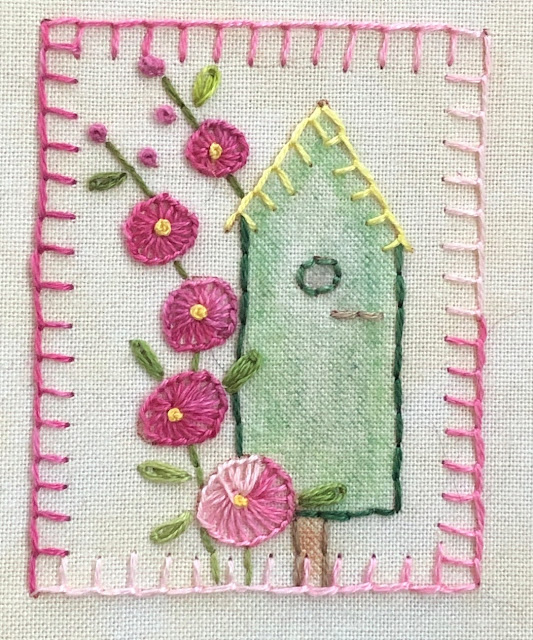Okay, so let's back up to our drive through Titus Canyon again. One of the things I most wanted to see along the way was the ghost town of Leadfield. There are ghost towns everywhere in Nevada. As I've mentioned previously (and over a period of years), there are many stories of some individual or some company going boom and bust here in the harsh environment of Death Valley. Leadfield is another example of that.
3/1/22
Time Traveling: Leadfield Ghost Town
Our guidebook mentioned that Titus Canyon Road was used by "Old Dinah," a steam tractor, to carry ore from the Keane Wonder Mine (visited on a previous trip), to the town of Rhyolite (also a ghost town now). You can read more about Rhyolite and see pictures right here. During a walk around Furnace Creek Ranch, I took a picture of Old Dinah and her informational sign.
Getting back to Leadfield...the signs tell the story.
And that's all that's left of Leadfield. You can read more about the town and its history right here.
Okay, so that's all I have for you today. We were out at the Marietta Wild Burro Range today, and oh my...what a fun adventure that was! I have some great pictures of the wild burros to share with you in tomorrow morning's post. As for the time traveling, I have just one more place to share with you, and then we'll be caught up.
We're in Hawthorne for just one more night, and we'll move along to Winnemucca, Nevada, tomorrow. We have reservations for three more stops along the way home, and we expect to reach the Three Cats Ranch on Saturday. It's been a wonderful trip, and it will be wonderful to get home again too.
Time Traveling: Titus Canyon Road
Good morning, my friends! I'm so happy to be sipping my coffee while we chat this morning. It's been a while since we've spent a morning together. Today I'll be writing the first of three time traveling posts, backing up a full week to when we took a drive through Titus Canyon. But first...let's back up to a day earlier when we made our way from Pahrump to Death Valley, a drive of about two hours. The colors of Death Valley begin to appear fairly quickly along this road. It's a pretty drive.
Okay, so heading northwest from the Furnace Creek Campground, we were on the main highway heading toward Daylight Pass Road.
We had a good view of Corkscrew Peak as we went. It's possible to hike to the top, but we're much too old for that sort of thing. You understand, right?
I took a picture of all the safety warnings, but it was mostly cut-off on the right-hand side. What can I say? Just tread carefully as we go, my friends. And be sure to bring a bottle of water. You could die out here.
The road started out easy enough. It's maintained, but rugged. One could travel this road without high clearance or four-wheel drive, but it was a rough road even in our truck.
Here's a pano of the area from where we were parked. It's very isolated. We would leave the park and the state of California and then re-enter again as we ended our trek.
The bands of color in the hillside are the most interesting parts of the beginning of the road. We would be traveling 26.1 miles before we were finished.
Below, we're looking at an erosional remnant of a thick layer of volcanic ash that blanketed the countryside during a tremendous eruption 11 million years ago (about the time I celebrated my first birthday). The eruption took place near Yucca Flat, within the Nevada Test Site. Our book informs us that the prominent rock layers, from bottom to top, are while volcanic ash, greenish steam-deposited siltstone, a pale layer of sandstone, and a rough mountaintop of volcanic ash erupted from Monotony Valley, Nevada.
It isn't surprising that the petroglyphs would appear here because we were approaching Klare Spring. You can read a little more about this right here. For now, just know that it is the only reliable source of water in all of the Titus Canyon drainage system, and so it is critical for wildlife. Where there is water, there are often petroglyphs.
Sadie has taken up residence on the shelf of Mike's side of the closet. She's very comfortable there, thank you, and Smitty is too big to bother her there.
When I had 25 finished, I made this little collage. My collage-maker won't let me do more than 20 photos, and so I tacked the bottom row on.
And, this being March 1st, I'm setting as my goal to sew the inchies into a completed quilt top for March's
Oh, but that's not all. I've finished all the blackwork baskets now too. Here's Basket #8...
I have some pretty fabrics at home I'll use when I sew this into a finished quilt top. I'm kind of excited to get started on it.
Okay, so that's all I have for you this morning. We're heading off to see the Marietta Wild Burro Range this morning. Fingers crossed we actually see some wild burros. If there's time, I'll be back this afternoon with another post...I'm trying to catch up. If not, I'll be right back here tomorrow with the latest from the Traveling Three Cats Ranch.
Subscribe to:
Comments (Atom)


















































































